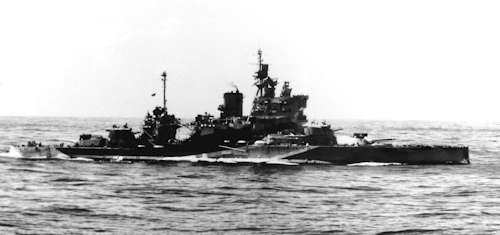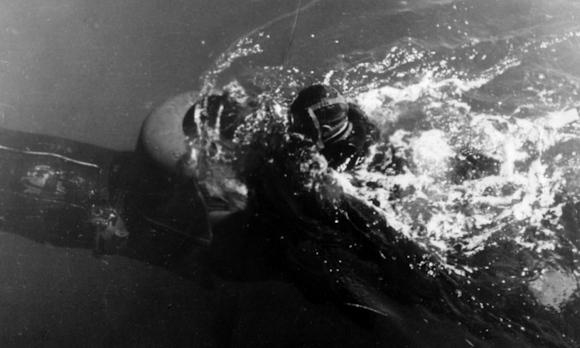In the night between 18 and 19 December 1941, 6 raiders of the Navy carried out the Enterprise of Alexandria, against the British fleet in the Mediterranean (Mediterranean Fleet), writing a culminating finale for the GA3 operation. This operation was the result of a meticulous preparation of means and training.
The careful study of the opposing defenses had already begun in the summer of that year, using both the decryption of the adversary radio messages and the captures of English documents and maps obtained in the most diverse forms. One of the most striking cases is undoubtedly the adventurous recovery from the bottom of the sea of the secret documentation kept on board the wreck of the British destroyer. Mohawk, torpedoed and sunk by the Italian fighter Tarigo.
The operation kicks off with the boarding of assault vehicles Slow running torpedoes (SLC), later universally known as "Pigs", on the submarine Sciré, which, under the command of Lieutenant Junio Valerio Borghese, leaves La Spezia at 23 pm on 00 December 3, heading for the Italian base in Lero, where it arrives on the evening of the 1941th after a journey that is not without unexpected events.
Spotted by a British plane, he escapes identification by cheerfully greeting the enemy aircraft only to promptly transmit, with the projector, the correct English recognition signal of the day, obviously obtained thanks to the work of the Navy's Secret Information Service, as they will discover with horror. British investigators the following month after reviewing all reconnaissance reports from November-December 1941.

At 07:00 on the 14th, the operators boarded, the boat leaves its moorings and begins the hidden navigation towards Alexandria, emerging only at night to recharge the batteries and check the route. On the evening of December 17, 1941, confirmation arrives of the presence in the port of two battleships by the central command of the Navy and, loaded to maximum air and electricity, the Scirè it begins its incredible undersea race through the mined dams, always below the 60 m of depth and on rapidly decreasing bottoms, to emerge, finally, in perfect position to 1.3 nautical miles for 356 ° from the headlight of Alessandria.
The six men of the assault group, in pairs on each pig, thus began their occult transit towards the targets. On the pig 221 the lieutenant Luigi Durand De la Penne with the chief diver Emilio Bianchi, on the pig 222 Captain of the Naval Arms Vincenzo Martellotta with the chief diver Mario Marino and on the pig 223 the captain of the Naval Engineers Antonio Marceglia with the diver sub-chief Spartaco Schergat.
De la Penne: "How's Bianchi doing?"
Bianchi: "Well commander"
De la Penne: "Are you afraid?"
Bianchi: "Yes commander"
De la Penne: "Me too. Well, let's go!"
 Durand de la Penne and Bianchi headed for the battleship Valiant. In the last part of the underwater race de la Penne was forced to drag his own vehicle to the bottom having lost the support of Bianchi who was struck by an illness due to a malfunction of the respirator. He managed to place the explosive charge under the ship but was captured.
Durand de la Penne and Bianchi headed for the battleship Valiant. In the last part of the underwater race de la Penne was forced to drag his own vehicle to the bottom having lost the support of Bianchi who was struck by an illness due to a malfunction of the respirator. He managed to place the explosive charge under the ship but was captured.
Shortly afterwards, Bianchi was also captured and the two were locked in the ship's chain pit. The two did not reveal the location of the bomb but half an hour after the explosion, de la Penne had the captain of the ship lead him to inform him of the risk run by the crew; nevertheless he had the Italian officer taken back to where he was. The explosion was punctual and tore open the hull of the battleship but the two Italians managed to get out of the room and go on deck from where they were evacuated together with the rest of the crew.
Martellotta and Mario Marino, were forced to navigate on the surface due to an illness of the crew chief and managed to position the charge for the tanker Sagona without being able to escape the capture of the Egyptians. The explosions took place around six the next morning. Four ships were seriously damaged in the enterprise: in addition to the three mentioned also the destroyer HMS Jervis, moored alongside the Sagona, was in fact the victim of the charges placed by the Italian attackers.
Marceglia and Schergat finally managed to carry out the attack on the Queen Elizabeth. After placing the explosive charge they reached land and managed to get away from Alexandria but were recognized and captured too the next day.

The final damage balance was the following: sinking of two British battleships HMS Queen Elizabeth (33.550 tons) and HMS Valiant from (27.500 tons) and damage to the tanker Sagona (7750 tons) and the destroyer Jervis (1690 t). An epic feat and an extraordinary victory against what was, at the time, the largest Navy in the world. Not a single act, but an action framed in a strategy which, together with the effective offensive actions of the following months against the British convoys bound for Malta, allowed Italy to exercise Maritime Power in the Mediterranean.
"... six Italians equipped with low cost materials have shaken the military equilibrium in the Mediterranean to the advantage of the Axis." (Winston Churchill)
Il 1st battle squadron of the Mediterranean Fleet, the traditional flagship of the Royal Navy, no longer exists since December 1941.
The valor of our heroes was also appreciated by those who suffered their action. Three years later, the six protagonists of the enterprise were decorated in Taranto with the gold medal for military valor in a completely unique way: Commodore Sir Charles Morgan, former commander of the HMS, pinned the medal on their chest. Valiant at the time of the operation.












